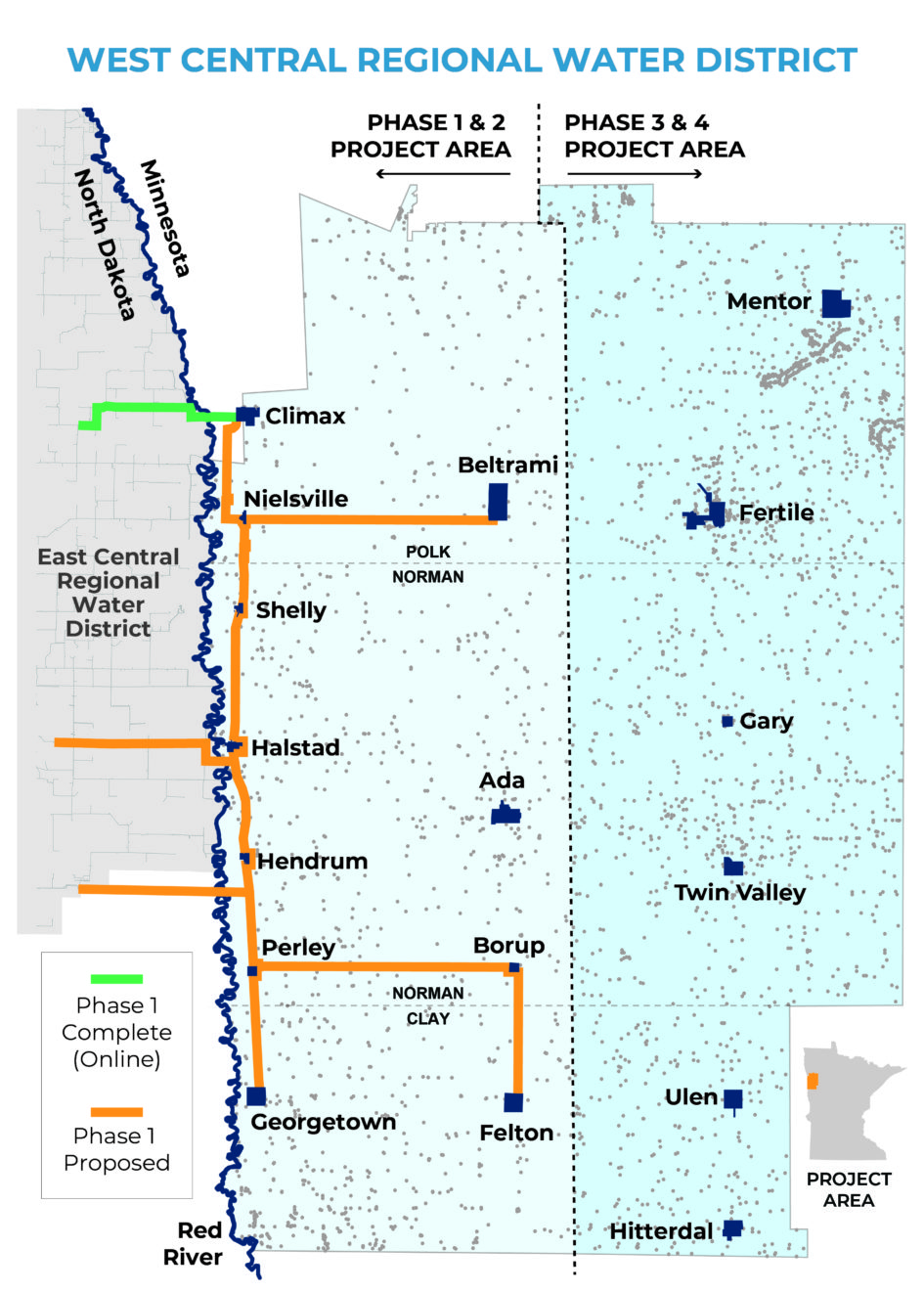Aging infrastructure and regional water quality problems have motivated three counties in west central Minnesota to pursue the creation of a new water district. The proposed West Central Regional Water District has the potential to serve 15,000 people in 16 cities and rural areas of Polk, Norman, and Clay Counties in western Minnesota.
Residents in portions of all three counties have an urgent need for a safe, reliable, and sustainable drinking water supply due to arsenic levels across the service area that are above the U.S. Environmental Protection Agency’s (USEPA) maximum contaminant level (MCL) of 10 micrograms per liter. According to the Minnesota Department of Health, 43% of private wells in Norman County, 39% in Clay County, and 21% in Polk County exceed the MCL established by USEPA to protect public health. Long-term exposure to arsenic in drinking water may increase the risk of liver, bladder, and lung cancer. It can also cause nervous system issues and high blood pressure.
In addition to safety concerns related to arsenic in the water supply, residents have dealt with the effects of hard water for as long as they can remember. Minerals in their current tap water stain clothes and plumbing fixtures. Hard water can shorten the lifespan of appliances, as well as require increased plumbing maintenance.
The regional solution started to make good financial sense as the Cities in the proposed service area added up the cost of rehabilitating or replacing their aging water infrastructure. Rehabilitating existing municipal or privately-owned water infrastructure such as treatment facilities, wells, and service lines can be prohibitively expensive for small communities.
“It simply would not be as cost-effective to update the individual water systems as regionalization will be. Taking a regional approach allows costs to be spread over a larger population to make it more affordable for residents across all three counties,” explains Stephen Slick, AE2S Project Manager. The new water supply and delivery infrastructure will also allow for several decades of worry-free water being delivered to the tap.
To date, nearly 20 cities, counties, and economic development entities plus the Minnesota Rural Water Association signed letters of support or adopted resolutions in support of the creation of the West Central Regional Water District. Rural residents also submitted testimonials in support of the regional effort. As proposed, the new water supply will provide about 360 million gallons of water each year, which will bolster opportunities for future population growth and economic development in western Minnesota.
The West Central Regional Water District will mirror a system across the border in eastern North Dakota called East Central Regional Water District. East Central is one potential water supplier that West Central could utilize, in addition to some municipal systems in Minnesota that are also in consideration. The City of Climax, Minnesota went online with service from East Central in December 2022.
“Hooking up to East Central Regional Water District has relieved Climax of the future large expenses involved with updating our aging water tower and water treatment plant,” said Brian Evenson, Climax City Council Member. “I’m hopeful our neighboring communities in west central Minnesota will also have a new water supply to celebrate in the near future. A big thanks to the Polk County Commission for their support and faith in this project being the first step to high quality water for all future potential beneficiaries.”
Polk, Norman, and Clay Counties are currently in the process of following Minnesota State statute and guidance to legally form the West Central Regional Water District. Project supporters are requesting funding from the Minnesota legislature during this session to complete a preliminary engineering report that includes a feasibility analysis of project alternatives. The State requires a preliminary engineering report to be completed before a water district can legally be formed. In addition, project supporters are also seeking funding for Phase I of the regional effort to construct pipelines to the Cities of Nielsville, Beltrami, Shelly, Halstad, Hendrum, Perley, Borup, Felton, and Georgetown.
“Ultimately, the development of the West Central Regional Water District has progressed due to the collaborative effort among the leaders of Polk, Norman, and Clay Counties,” says Stephen. “The AE2S Rural Water Practice is grateful for the opportunity to help improve water quality and quantity for residents of three Minnesota counties. It’s projects like this that make our team excited to come to work each day.”

